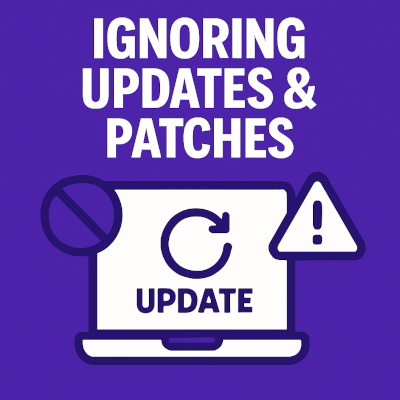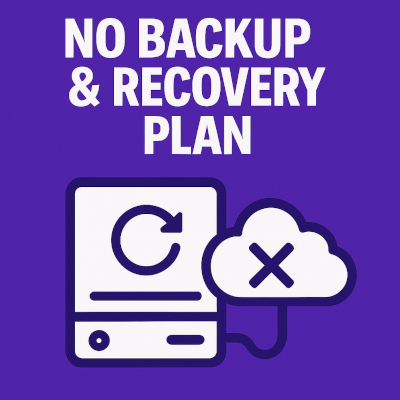Top 5 Mistakes SMBs Make in Cyber
Despite best intentions, many small and medium sized businesses make avoidable mistakes that leave them dangerously exposed to real-world threats. Here are the five most common cybersecurity mistakes SMBs make and how to fix them.
1. Underestimating Their Risk
Many SMBs believe that they are “too small” and that cybercriminals only target large enterprises; but this is a huge misconception, that can be fatal for many. In reality SMBs are being targeted nearly 4x more than large organisations1. Cybercriminals view SMBs as a “quick-win” or the “low-hanging fruit” - with limited resources to defend themselves. If you’re a SME, you likely still hold valuable customer records, or can’t afford loss of operations - a ransomware gangs dream!
🔧 The Fix: you need to run assessments, evaluate your vulnerabilities, and acknowledge and manage the risk.
2. Weak Password and Poor Authentication
Reusing simple passwords or skipping multi-factor authentication (MFA) is an open invitation for breaches. Over 88% of Web Application breaches involve the use of stolen credentials1. We’ve encountered dozens of situations were employees of SMBs, even up to executive levels, are using business devices to access personal accounts and reuse credentials across their personal and business accounts. It only takes a few hours of Open Source Threat Intelligence to discover your employees email addresses and associated accounts that have been involved in a breach where passwords may have been leaked - password that are likely reused.
🔧 The Fix: enforce strong password policies, require regular password changes, utilise a password manager and deploy MFA.
3. Poor patch management
Unpatched systems remain vulnerable. SMBs often delay updates, or don’t enforce patch management strategies at all. Cybercriminals will exploit these vulnerable, unpatched systems - WannaCry was a famous example of this, a modern example is the SimpleHelp vulnerability.
🔧The Fix: Implement a patch management strategy, enable automatic updates and use centralised monitoring to detect anomalies and patch/version creep.
4. No or Untested Backup & Recovery Plan
For many SMBs data backups are ad hoc, or non existent. This usually comes with the territory of “Well, we’ve never experienced a breach, so we’ve never needed the backups”. After a sucessful cyber attack, 1 in 5 SMBs would be forced out of business2. You’ll be grateful if you have those backups to restore and recover your business.
🔧The Fix: Adopt a 3-2-1 backup strategy (on-site, off-site, test regularly). If you don’t test, how do you know you can perform a fast restoration in the face of a ransomware attack?
5. Neglecting Employee Training & Incident Response
Most breaches start with human error (Phishing, Vishing, Miss-clicks, or lack of awareness). Over 83% of organizations reported insider attacks in 20243. Yet, many SMBs do not have formal incident response plans or ongoing staff staining programmes. If you don’t train your staff, how do you expect them to identify suspicious emails? If you don’t implement a incident response plan and test it how can you be sure everyone knows what to do in the heat of a breach?
🔧The Fix: Implement a regular security awareness program, deploy phishing simulations (attack as well as defend), and document an accessible and understandable incident response playbook.
3. 83% of organizations reported insider attacks in 2024; IBM
Quick Recap
| Mistake | Why It Matters | Simple Fixes |
|---|---|---|
| Underestimating Risk | SMBs are frequent ransomware targets | Perform risk assessments |
| Weak Passwords | Easily cracked or reused, inviting breaches | Enforce strong PW + MFA |
| Ignoring Updates | Known vulnerabilities remain exposed | Automate patching |
| No Backup Plan | Data loss = potential business failure | 3-2-1 backup strategy |
| No Training & IR Plan | Human error is still the #1 threat | Run simulations + document IR playbook |
Final Word
A little vigilance goes a long way. By addressing even just one of these gaps, SMBs can dramatically reduce their cyber risk. But the most resilient defense is a comprehensive, managed strategy—and that’s exactly what we offer.
👉 If you’re ready to take control, connect with us via our Contact Page. We’ll help you assess your current posture and design a tailored cybersecurity roadmap — because even the strongest armour needs to be tested and maintained.
Stay safe, stay cybersmart.






